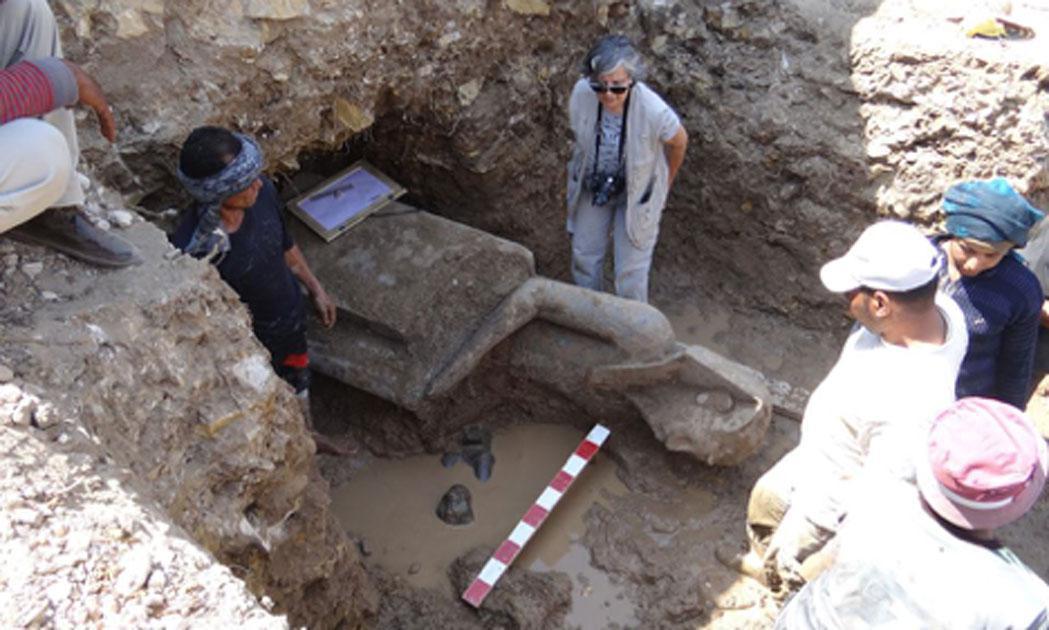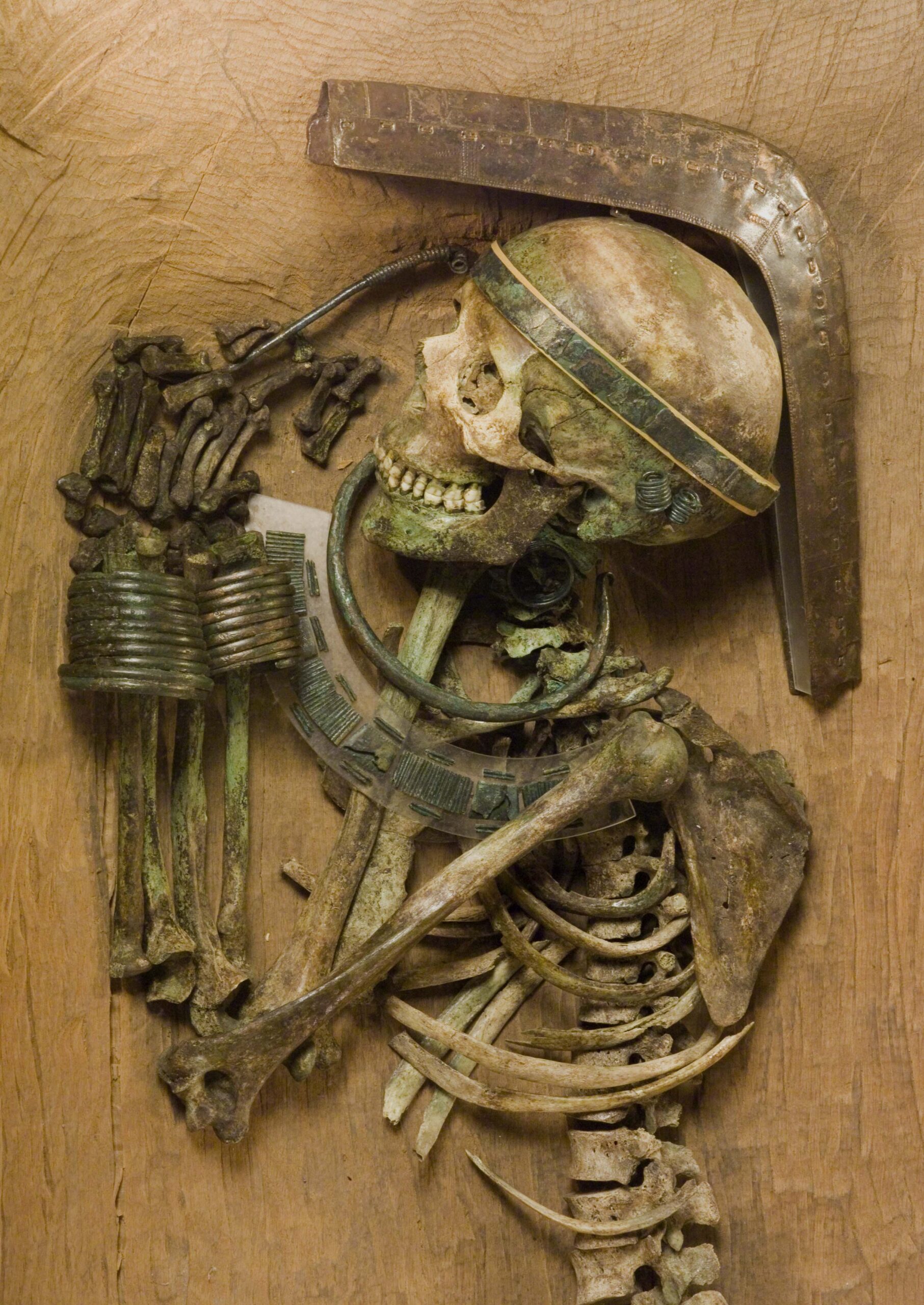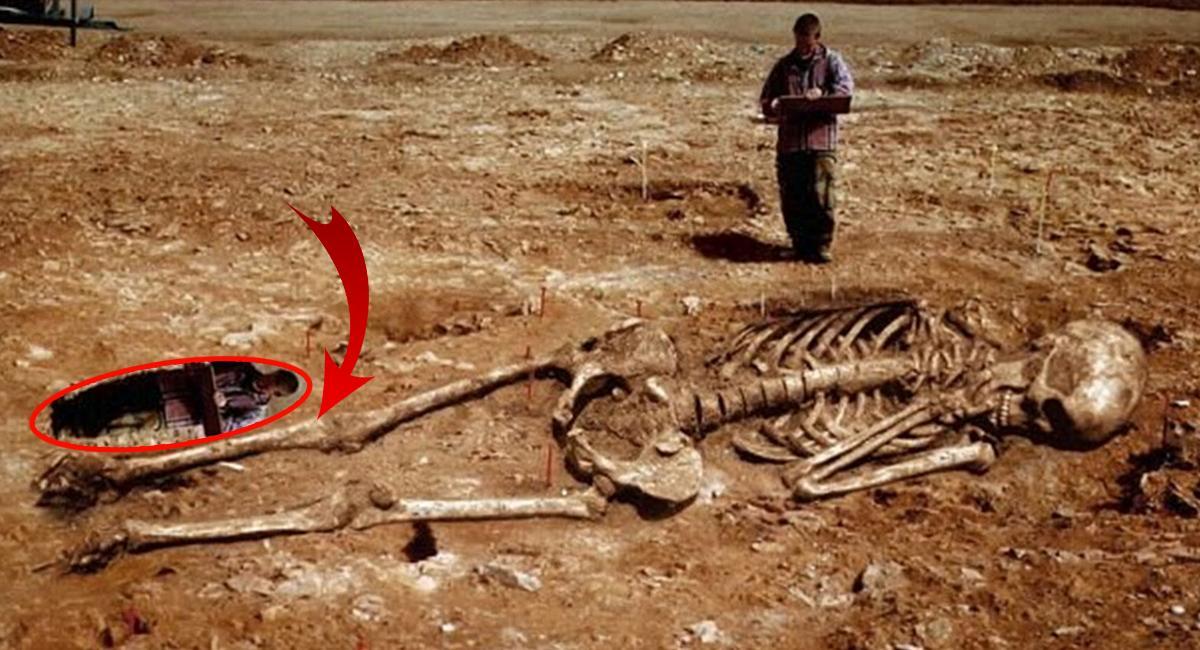A new DNA study of the bones shows the remains are in fact human and belonged to a baby girl who had dwarfism.
Nicknamed ‘Ata’, the incredible find made in 2003 in Atacama, Chile, has a long cone-like skull and just ten ribs.
The skeleton found its way to a collector in Spain who speculated that it was an extra-terrestrial – judging from its bizarre appeareance – and it appeared in a documentary, Sirus, which suggested it was evidence of alien life.
After five years of deep genomic analysis scientists have pinpointed the mutations responsible for the bizarre specimen.

Scientists have tested the DNA of a bizarre human skeleton, once rumored to have extraterrestrial origins. The skeleton, nicknamed Ata, was discovered more than a decade ago in an abandoned town in the Atacama Desert of Chile

The skeleton, found in a leather pouch, was sold to a private collector in Spain soon after it was discovered. Scientists in California recently extracted DNA from the mummy’s bones to uncover its origin
Genetic tests at the University of California, San Francisco and Stanford University have proven beyond contention that the bones were that of a human female that died 40 years ago.
It was initially thought to be a child around 6 to 8 years old, but scientists now believe it was a fetus, or a child that died shortly after birth.

The researchers found mutations in not one but several genes known to govern bone development, some of which have never been described before.
DNA analysis reveals that her appearance can be explained by a series of genetic mutations that are linked to dwarfism and other bone and growth disorders.

The skeleton is most likely from a premature baby, or from one soon after birth.
DNA analysis reveals that her appearance can be explained by a series of genetic mutations that are linked to dwarfism and other bone and growth disorders
The latest study revealed four new SNVs -a type of genetic mutation at the individual level – in genes that were known to cause bone diseases, like scoliosis or dislocations, as well as two more SNVs in genes involved in producing collagen
Sanchita Bhattacharya, a researcher at UCSF said she found 64 gene variants in ‘Ata’s DNA that seemed likely to be damaging.
She found that, incredibly, 10 of the variations were linked to skeletal problems including ‘short stature’ and ’11 pairs of ribs’.
Other gene variations include problems with producing collagen – used in cartilage – and genes linked to curvature of the spine known as scoliosis.

Beyond her skeletal malformations, Ata may have had a genetic condition known as congenital diaphragmatic hernia
This is a relatively common life-threatening birth defect in which the diaphragm does not develop properly.
Garry Nolan, a professor of microbiology and immunology at the Stanford University School of Medicine, began the scientific exploration of Ata in 2012, when a friend called saying he might have found an ‘alien.’
Dr Nolan said that research on Ata may one day benefit patients.
He said: ‘Maybe there’s a way to accelerate bone growth in people who need it, people who have bad breaks.
‘Nothing like this had been seen before. Certainly, nobody had looked into the genetics of it.’
He said her genes are similar to those of Chilean Chilote Indians, and that the remains suggest she lived no more than 40 years ago.
Speaking to the Guardian, he said: ‘She was so badly malformed as to be unable to feed. In her condition, she would have ended up in the neonatal ICU, but given where the specimen was found, such things were simply not available.’

The skeleton, nicknamed Ata, was discovered more than a decade ago in an abandoned town in the Atacama Desert of Chile. The unusual appearance is explained by a handful of rare genetic mutations, some already known, others newly discovered

The researchers speculate that the skeleton’s deformities and the fact it was found near an abandoned nitrate mine in Chile may have resulted from DNA damage caused by exposure to nitrates
‘While this started as a story about aliens, and went international, it’s really a story of a human tragedy.
‘A woman had a malformed baby, it was preserved in a manner and then “hocked” or sold as a strange artefact. May she rest in peace.’
He added he hoped Ata is given a proper burial. ‘We now know that it’s a child, and probably either a pre- or post-term birth and death.
‘I think it should be returned to the country of origin and buried according to the customs of the local people.’
The researchers speculate that the skeleton’s deformities may have resulted from DNA damage caused by exposure to nitrates.
The remains were found near an abandoned nitrate mine in Chile.

This was the skeleton of a human female, likely a fetus, that had suffered severe genetic mutations

The girl’s cone-shaped skull remains a mystery even after the genetic analysis.
It has previously been suggested that the unusual shape could have been caused by a condition known as oxcephaly, or turricephaly.
This condition can cause a premature closure of the sutures which separate the different bones in the cranium.

Ata has the DNA of a modern human female with the mix of Native American and European ancestral markers one would expect from someone who lived near the place where she was found
When this happens, the development of the brain and the rest of the skull follows an unusual pattern and can lead to a towered appearance of the skull.
There are many different types of craniosynostoses, conditions which can cause a malformed skull, but this is considered the most severe.
The condition is linked to impaired mental capacity and decreased neurological function



